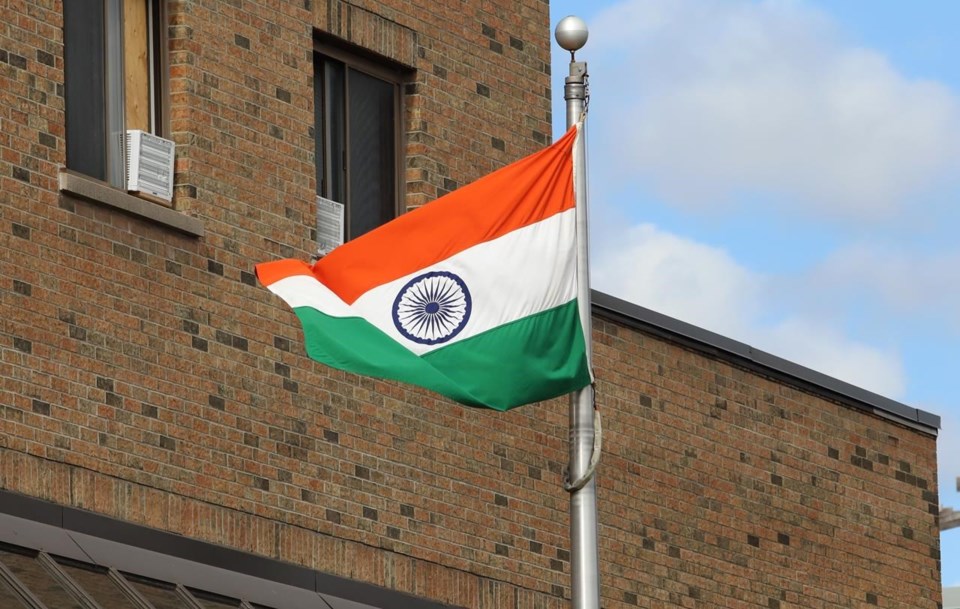MONTREAL — Business leaders continue to grapple with fallout from the rift between the Canadian and Indian governments, saying the suspension of free trade talks helps no one.
Thesouringrelationship marks a major hurdle to boosting bilateral trade beyond last year's $20.9 billion in goods and services and deters Indian students from studying in saąúĽĘ´«Ă˝, commercial groups say.
“Stopping any trade discussion or trade negotiation doesn't make sense. How will that help us as a country?" asked Satish Thakkar, chairman of the saąúĽĘ´«Ă˝ India Foundation. saąúĽĘ´«Ă˝ halted trade treaty talks on Sept. 1.
“This is the biggest fall in saąúĽĘ´«Ă˝-India relations since the 1970s."
They rapidly deteriorated after Prime Minister Justin Trudeau told Parliament on Sept. 18 that New Delhi may have been involved in the killing of Canadian citizen Hardeep Singh Nijjar, a Sikh independence activist who was shot dead in June outside the gurdwara he led in Surrey, saąúĽĘ´«Ă˝
In response, the Indian government suspended visa services for Canadian citizens — partially restored last month — and revoked diplomatic immunity from Canadian diplomats, prompting two-thirds of them to leave the country.
The trade potential between saąúĽĘ´«Ă˝ and India — the world's most populous nation and fastest growing large economy — remain largely unrealized, observers say. India remains saąúĽĘ´«Ă˝'s eighth-largest trading partner, well behind the U.S. and China.
Negotiations on the would-be Comprehensive Economic Partnership Agreement launched in 2010 before foundering in 2017. They resumed in 2022, with the goal of reaching a deal this year.
The Asia Pacific Foundation of saąúĽĘ´«Ă˝ says the treaty could increase two-way trade by up to $8.8 billion by 2035 and result in a Canadian GDP gain of up to $5.9 billion. saąúĽĘ´«Ă˝'s mineral, agriculture, chemicals and wood product sectors could all see sizable export boosts.
“There is a lot of complementarity between what saąúĽĘ´«Ă˝ has and India needs," said Victor Thomas, CEO of the saąúĽĘ´«Ă˝-India Business Council. "IT services, for example — a huge growth in very specific talent that, again, complements our economy that India can provide.
Of the 32,115 international tech workers who migrated to saąúĽĘ´«Ă˝ between April 2022 and March 2023, nearly half — 15,097 — came from India, a July report from the Technology Councils of North America and saąúĽĘ´«Ă˝'s Tech Network found.
"This relationship is extremely important," Thomas said. "But businesses like predictability and stability."
The frayed relations mean "uncertainty prevails," sowing doubt among some Indian students who were considering post-secondary education in saąúĽĘ´«Ă˝, said Thakkar. At 40 per cent, that talent pool makes up the largest portion of the country's international student body.
"They are becoming the main source of the workforce, and entrepreneurs also. We come across international students who then got (permanent resident status) and today own multiple businesses," Thakkar said, noting saąúĽĘ´«Ă˝'s aging population.
“Back home, our family and friends say, 'I was thinking of sending our son or daughter to saąúĽĘ´«Ă˝, but we are rethinking now.'"
The current lack of Canadian diplomats in the subcontinent only adds to study permit application woes, he said.
Efforts to mend the frayed relationship continue. This Friday, the saąúĽĘ´«Ă˝-India Business Council plans to host industry and state representatives from both countries in a closed meeting in Toronto, Thomas said.
However, Global Affairs saąúĽĘ´«Ă˝ said trade talks remain paused. "No further meetings are scheduled," spokesman Jean-Pierre Godbout said in an email.
He reiterated that the government remains committed to supporting exporters and said businesses can contact saąúĽĘ´«Ă˝'s trade commissioner services to tap into its network.
On Oct. 25, India announced it would resume processing applications from Canadians looking for business, medical and conference visas, as well people with family ties in India.
Matthew Holmes, in charge of policy and government relations at the Chamber of Canadian Commerce, said he was relieved that service was up and running again and remained "cautiously optimistic."
"But I think it will take a while for this to really resolve itself and play out. Unfortunately businesses are going to feel this for some time, whether that's disruptions to trade or to travel. Where they could have easily resolved an issue, it might become harder to do so for the foreseeable future," Holmes said.
"We've seen this affect agricultural members of ours ... in particular, with pulses and proteins."
Boatloads of Canadian potash, lentils, canola oil and coal briquettes land at Indian ports each year, while saąúĽĘ´«Ă˝ imports chemical products, clothes and metals.
saąúĽĘ´«Ă˝ sent $5.3 billion worth of goods to India in 2022, or 0.7 per cent of its global exports, according to Statistics saąúĽĘ´«Ă˝. Imports from India amounted to $8.3 billion, around 1.1 per cent of total imports.
India is also the leading source of immigration to saąúĽĘ´«Ă˝, underscoring the importance of business ties between the two. About 118,000 or 27 per cent of the 437,000 new permanent residents in 2022 came from India, according to the Immigration Department.
Some 1.4 million residents of Indian descent call saąúĽĘ´«Ă˝ home, according to the 2021 census.
This report by The Canadian Press was first published Nov. 6, 2023.
Christopher Reynolds, The Canadian Press



